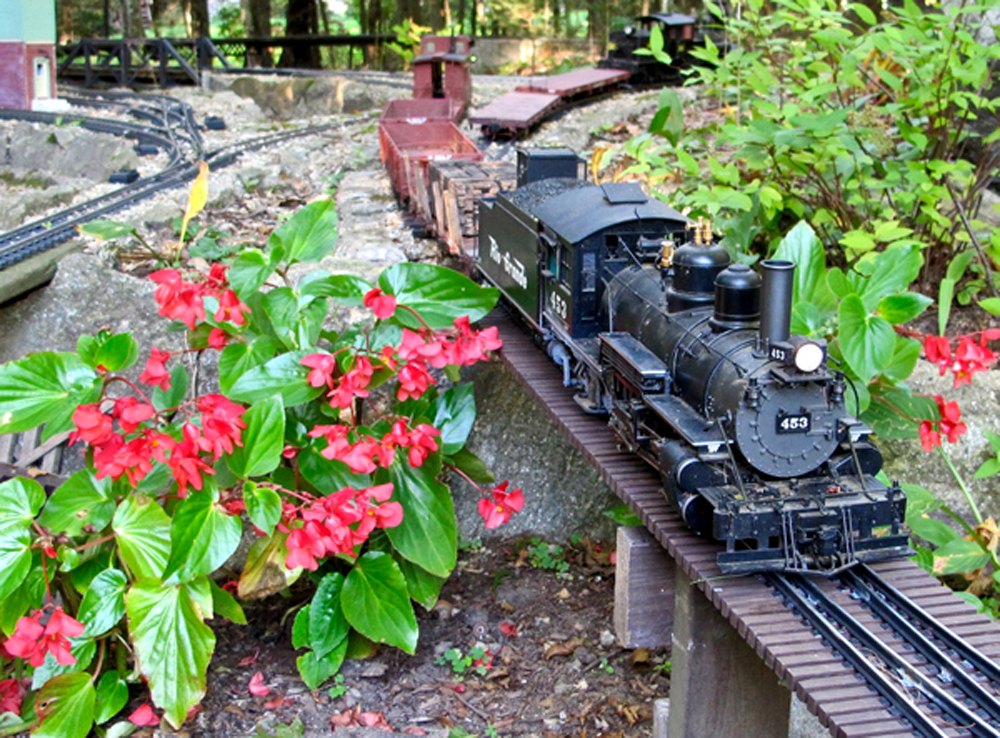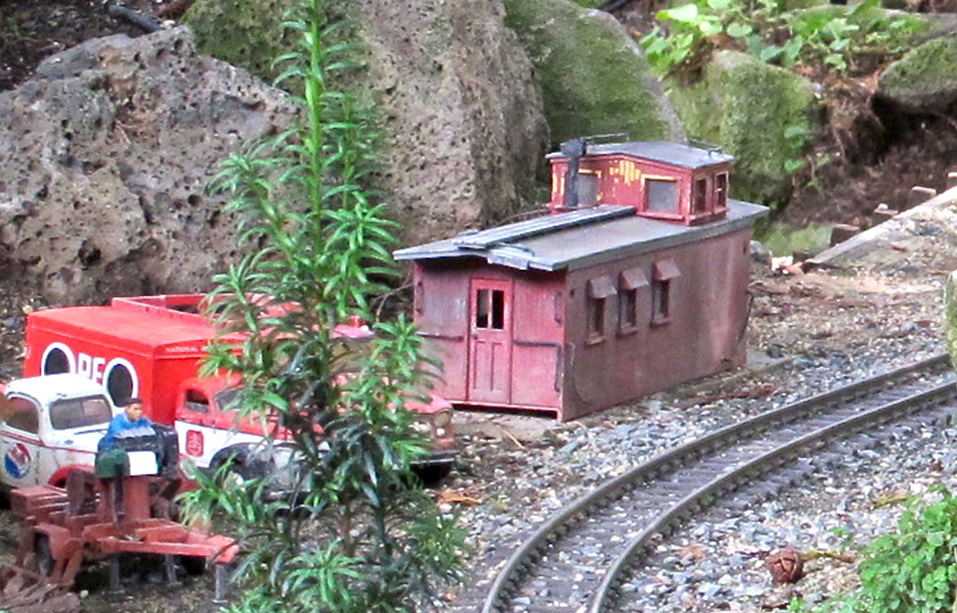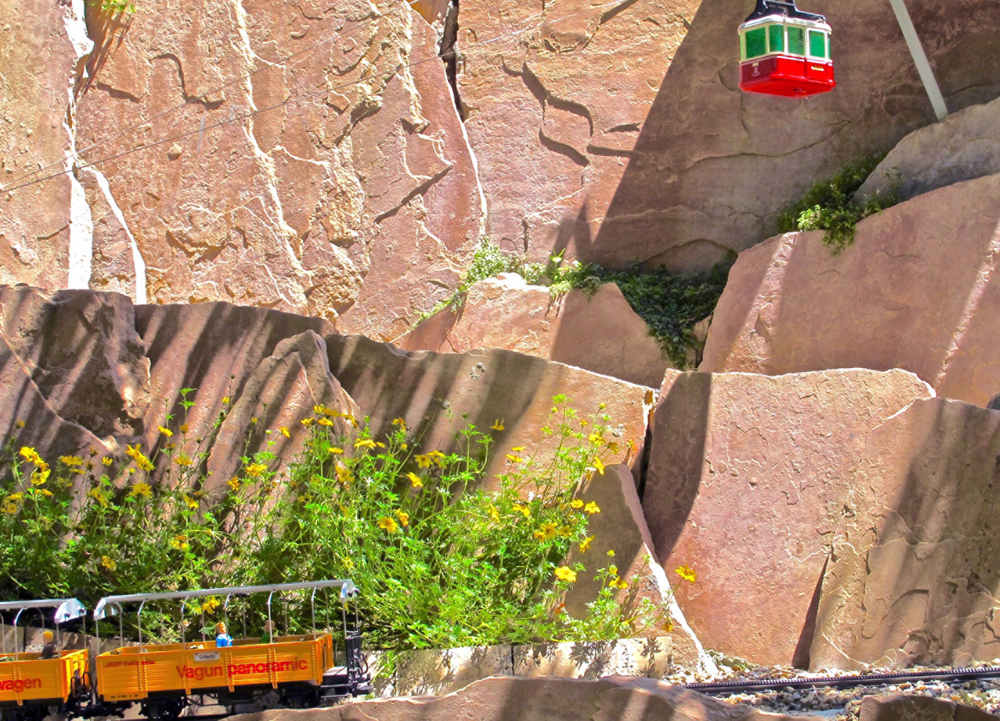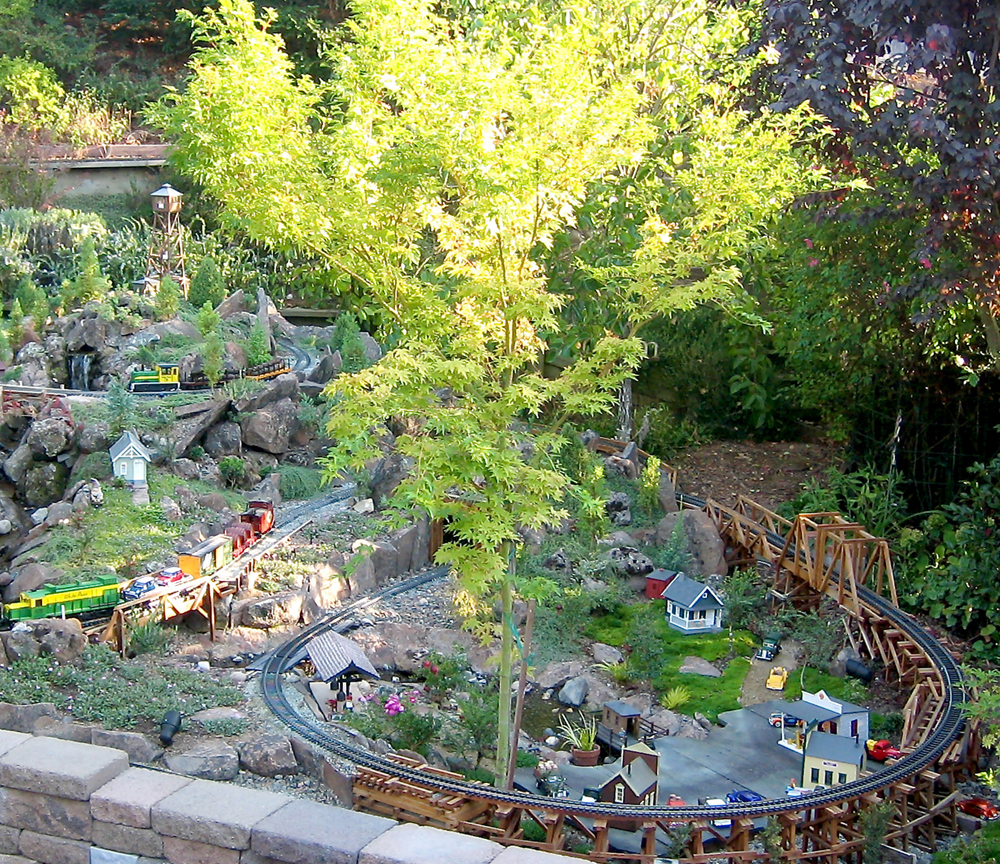Common name: Begonia
Latin name: Begonia sp.
Plant type: Annual
USDA Hardiness Zones: 10-11; grown as an annual in lower zones
Cultural needs: moist, well drained, neutral or slightly acidic soil; part shade
Plant size: 18″ x 18″

Most begonias are true perennials, living on for years as houseplants or in tropical gardens. Usually we see them growing in garden beds as annuals planted in the spring and allowed to be composted in the fall. Wax begonias have the smallest leaves and flowers. Angel-wing types have broader leaves.
Within this group are the Dragon Wing begonias hybridized by Burpee. Pictured in the photo above is Dragon Wing Red, planted on the Ames’ SJR&P. Not only is it a showstopper, the flowers call attention like a landmark to an area with a gantlet. Stan Ames built the gauntlet using two scratchbuilt switch frogs to allow two electrically-isolated lines to run parallel and overlapping on a narrow bridge without switch points. The train on the left had to wait for the train on the right to first cross that bridge. Good thing the dispatcher is on the job. Because this type of garden railway is traversed by hundreds of feet throughout the season, bold-flowered plants help to keep operators aware of certain features, like pathways and the gantlet.
Begonias do not set seed, so new plants must be purchased every spring. Propagate by cuttings. Choose from these flower colors: orange, white, yellow, pink, or red.
See more of the operations on the SJR&P.














Scarlett Begonias are my favorite.